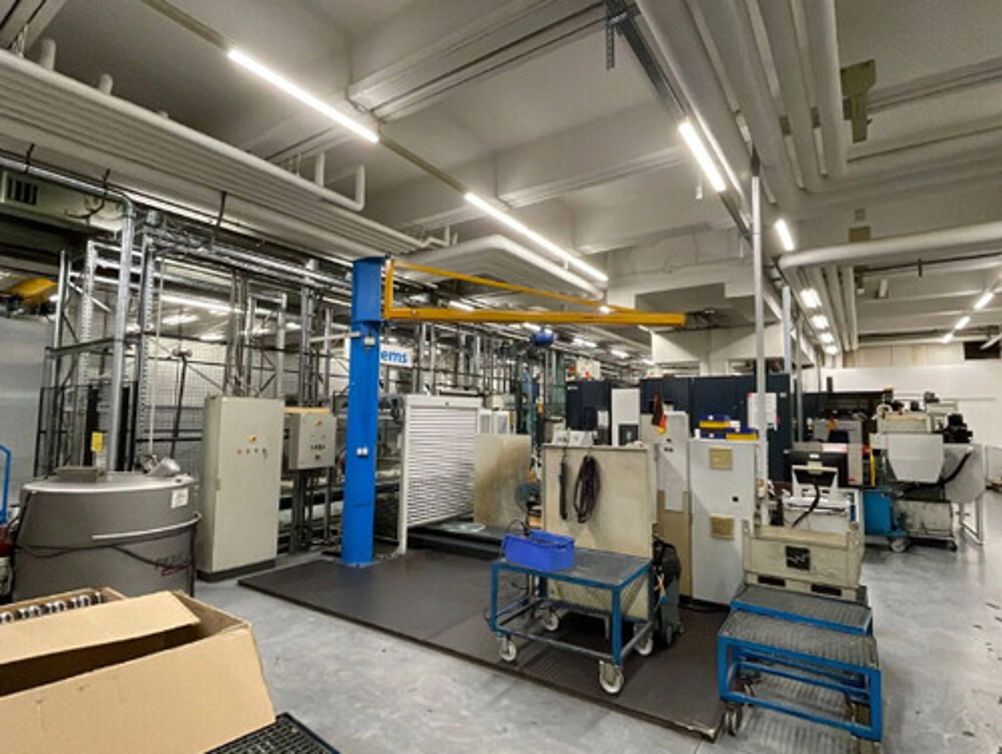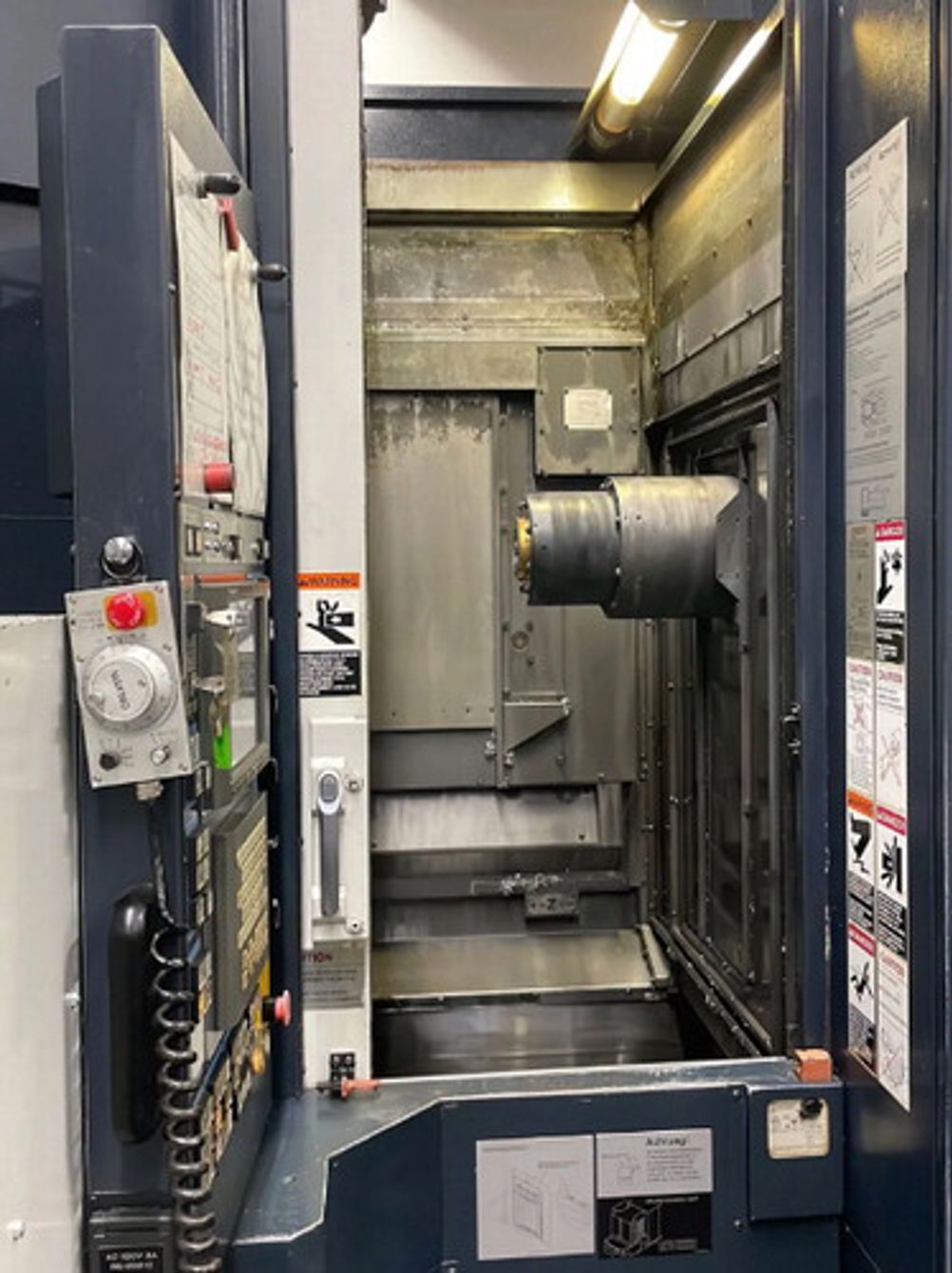1. MC, FMC and FMS explained.
Abbreviations make it easier to understand if you know what they mean. A machining center (MC) is a multi-axis CNC machine that is used for the complete machining of components. This means that they can turn, mill and drill and can change tools automatically. An MC that comes with automatic workpiece change capability is called a flexible manufacturing cell (FMC). An FMC therefore consists of three components: an MC, a workpiece handling system and the CNC control unit for automation. A flexible manufacturing system (FMS) is one that combines several FMCs.
2. The first MC was launched in 1959.
German company Burkhardt + Weber introduced a numerically controlled machining center as early as 1959. Punched taped was used for numerical control. Real computers were still the sole preserve of space and military research and therefore far too expensive for industrial uses. The first CNC manufacturing systems were created in the 1970s. They operated initially using mini computers, but these were replaced with microprocessors when they became affordable towards the end of the decade.
3. Horizontal machining centers are superior to vertical ones for series production.
There are basically two types of machining center: The tool spindle in a horizontal MC is mounted horizontally, so parallel to the floor. By contrast, vertical types have a perpendicular spindle and machine the workpiece from above. This makes it easier for the employees to handle the workpiece.
A horizontally guided tool can machine the workpiece at small angles, especially on its sides. They can therefore manufacture large components with complex geometries. These MC also enable automatic workpiece changes via pallets – an advantage in series production. In horizontal machining centers, the chips produced during machining fall off the table by themselves and do not have to be blown or flushed away like with vertical types.

4. Five-axis MCs are the most common type.
The cutting tool must be movable in five axes if workpieces with complex geometric shapes are to be produced without expensive downtime and retooling. Movements need to be possible in the three linear axes X, Y and Z as well as in the two rotational axes A and B.
Some machining centers have cutting tools that can machine the workpiece in all five axes simultaneously – this is known as simultaneous 5-axis machining. This configuration is fastest for manufacturing but does come at a price. The version that divides the spindle's freedom of movement into two groups is less costly. In this case, the tool moves either in the three linear axes or in the two rotational ones.
5. MCs are used in many areas of production.
Aside from toolmaking, machining centres are important machines for processing all kinds of metal parts. For instance, machining centers are used to manufacture machine components and matching tools in mechanical and plant engineering. In principle, MCs are available for almost all kinds of workpieces (wood, metals, ceramics and plastics etc).
Machining centers are widely used in production as they can combine different tools to enable complex component machining. They are also highly automated and therefore efficient. Tool changes, for example, take less than five seconds. A tool magazine has space for hundreds of different milling cutters, drills and other cutting tools. They are therefore used mainly in series production and are especially important in automotive engineering.
6. Hybrid MCs are the latest trend.
Hybrid machining centers combine different manufacturing processes, e.g. turning and milling. This speeds up production immensely and saves space. They can also be used to manufacture workpiece designs that would not be possible with conventional equipment. Combining a 3D printer with milling is a revolutionary idea in this area.
7. Buying second-hand MCs can be worthwhile.
Machining centers have a service life of well over 30 years, provided they are properly maintained. So anyone reluctant to invest a lot of money in economically difficult times is well-advised to check the second-hand machinery market. Machining centers can be purchased from Surplex.com, a European industrial auction house which trades worldwide in used machines and factory equipment.





